Welcome back to our continuing coverage of HBO’s new television series, The Last of Us, starring Pedro Pascal and Bella Ramsey.
Considering our four previous episodes with the addition of five, now halfway through the season, it’s fair to say this show is probably “good” in a general sense. This episode brings back some core tenets of a zombie apocalypse story (A.K.A., the zombies!), but also introduces some questionable material from the video game.
Let’s get into the recap and explore this material!
SPOILERS for the show through episode 5 and for the game through the content covered in episode 5
The Last of Us: Episode 5 “Endure and Survive” Summary
After last week’s cliffhanger that left our mains, Joel and Ellie, held at gunpoint by two strangers, we start in Kansas City the night the QZ fell. People in the resistance are seen attacking and mutilating FEDRA soldiers. The use of violence on screen in a visual medium is important to judge because it is not always necessary, and ubiquitous violence can numb the audience in a bad way. Here, the violence is used well: we get a few quick shots of violence, mostly assault and murder, which makes clear that the resistance fighters are no better than FEDRA.
Our two temporary new mains are introduced hiding behind some debris and watching the chaos unfold. Henry (Brandon Scott) signs to his deaf brother, Sam (Keivonn Woodard), and they escape to hide in a nearby building with an old man. The audience may recognize the old man as the doctor that Kathleen executed in the previous episode, so we all know where this is going.
Meanwhile, in case you forgot, Kathleen is still hunting Henry and Sam. And guess what? She kills more people in the process! Omg! Did you know she’s evil??
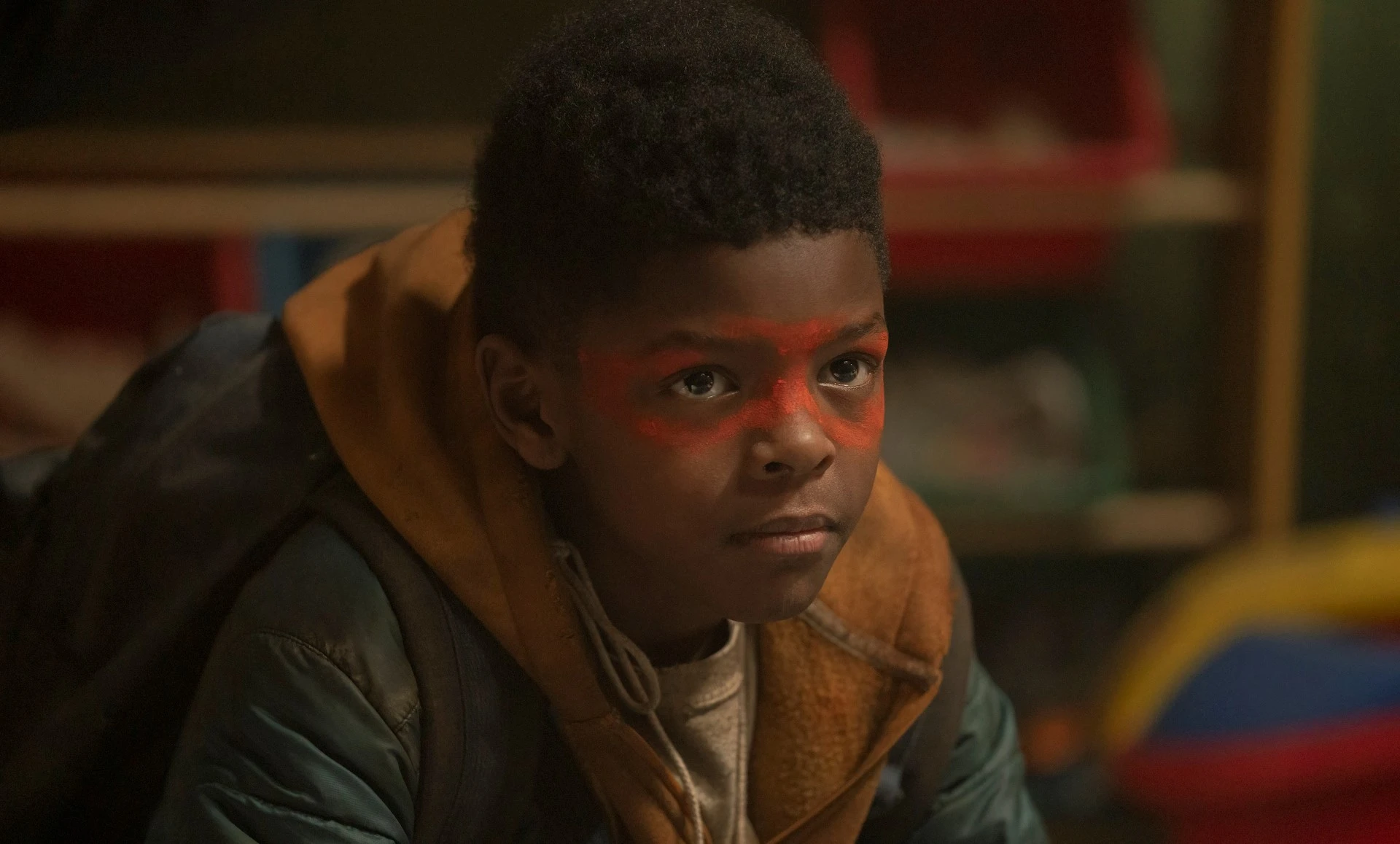
Henry and Sam hide in the attic for days until they run out of food. When Henry and Sam finally leave, they hear gunshots outside – and wouldn’t you know, they see our true mains, Joel and Ellie! What I like about this shot is that Joel thought (and we thought) that he wasn’t being watched anymore after that firefight, but Henry saw the whole thing. This added to the air of danger in the city, and the fact that these characters truly never know where anyone is. Actually, this could have fit really well thematically later on. But we’ll get to that below.
Our temporary mains do some sneaky-sneaky action until they find our true mains, and hold them at gunpoint. The four calm TF down and eat some snacks together. Ellie mentions Bill again, and my little gay heart fluttered for an instant – but then all she said was that he was dead. Wow. His character has been so impactful.

The group decides that teamwork makes the dreamwork, so they plan an escape together through the mysterious underground tunnels that are definitely, 100% safe and not haunted. They go there and, as it turns out, the tunnels are in fact 100% safe and not haunted. We’re given some lovely scenes of Ellie and Sam playing together. Aw, that’s a nice friend you have there Ellie! Sure hope nothing happens to him 🙂
A few things about these scenes. First of all, kudos to The Last of Us writing team for including a deaf character and actually including him. Sam isn’t shoved off to the side or left out. Indeed, Henry actively includes Sam in conversation, planning, and activities, and both Ellie and Joel learn to as well. Overall it seemed like good representation on screen. I would love to read input from deaf viewers on this, as they would have the best insight.
Second, this is the kind of subversion of expectations that The Last of Us *may* be getting right at points. We last talked about subverting expectations in episode two. Here, the classic horror expectation is that Henry is wrong and the tunnels are, in fact, very very haunted. The fact that Henry was right is a subversion of that genre expectation; and it does add to some tension in the story. However, I think this tension could have been built more if we’d seen the characters explore more of the tunnels. Sitting and chatting in one room does not create much dramatic tension or, in the end, dramatic satisfaction. And the four-second shot of a paper mentioning Ish was just insulting to players.
While Ellie and Sam play, Henry gets a chance to exposit his backstory. Turns out Sam is not only an 8-year-old child and deaf, he also had leukemia that was only treatable by turning in Kathleen’s brother to FEDRA, since then FEDRA would give him the medicine. So Kathleen is hunting and literally trying to kill a deaf 8-year-old leukemia survivor. Are you getting the feeling that she’s maybe bad?
Henry then looks directly at the camera and says, “I am the bad guy because I did a bad guy thing,” and Pedro Pascal looks pensively at the audience and says, “Do you get it? Do you get the themes?? Do you get it???”
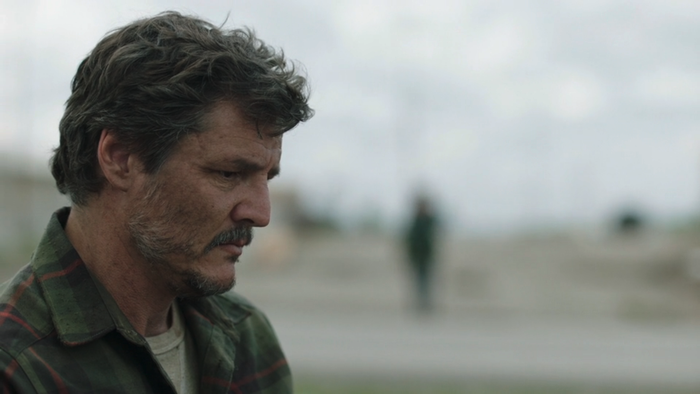
Then we get what is probably the worst scene of this show thus far. Like just major L my dudes. Kathleen is standing in a weathered room, leaning against a wall and brooding. Perry comes in, and Kathleen begins to monologue about how this was her childhood bedroom, and she used to share it with her brother, and she was afraid of thunder but he made her not afraid of thunder and blah blah blah. Kathleen says her brother told her to forgive the people that turned him in, but Kathleen also looks directly at the camera and says, “I can’t forgive a deaf sick child, because I am the villain.” DO YOU GET IT??
I can’t even unpack my feelings while watching this scene. I felt myself grow older. Pieces of my brain disintegrated into dust. My IQ dropped several points. I mean, what a royal waste of precious screen time. The dialogue writing was just ludicrously bad – listen to that scene (if you dare), no human being speaks like that. The actor, god bless, did what she could with it. This scene read very much like a first draft that nobody edited, and frankly the filming didn’t help at all. This badness is compounded by the fact that this scene made literally no impact to the plot. Easily could have been cut, nothing would have been lost.
And I know they were trying to parallel Henry to Kathleen, but they failed. The parallel is superficial at best. Yes Henry had a brother he cared for, and so did Kathleen. Henry sacrificed Kathleen’s brother for his own, okay. But the parallels stop there. We know for a fact that Henry hasn’t murdered anyone (the gun he pointed at Ellie wasn’t even loaded), while Kathleen has murdered many people on our screens. We know Henry sacrificed Kathleen’s brother to save his own, whereas Kathleen wants to kill Sam for revenge. And the brothers aren’t even parallels: one was an adult man, leader of a resistance movement, who knew his actions were dangerous, while the other is a literal child. These details *matter* when you’re trying to construct any kind of meaningful parallel. The plain fact is, these characters are not parallels.
So after Kathleen monologues about how evil she is and laughs maniacally at the screen, we fast-forward to our cadre in the final stretch before freedom. Henry explains that they just need to get to a river and then they are safe. Henry also explains that no one is in this part of town, and the scenery does look abandoned. And suddenly – shots fired! Someone shoots at them from the upper floor of one of the abandoned houses. The four duck behind a car. Who could it be???
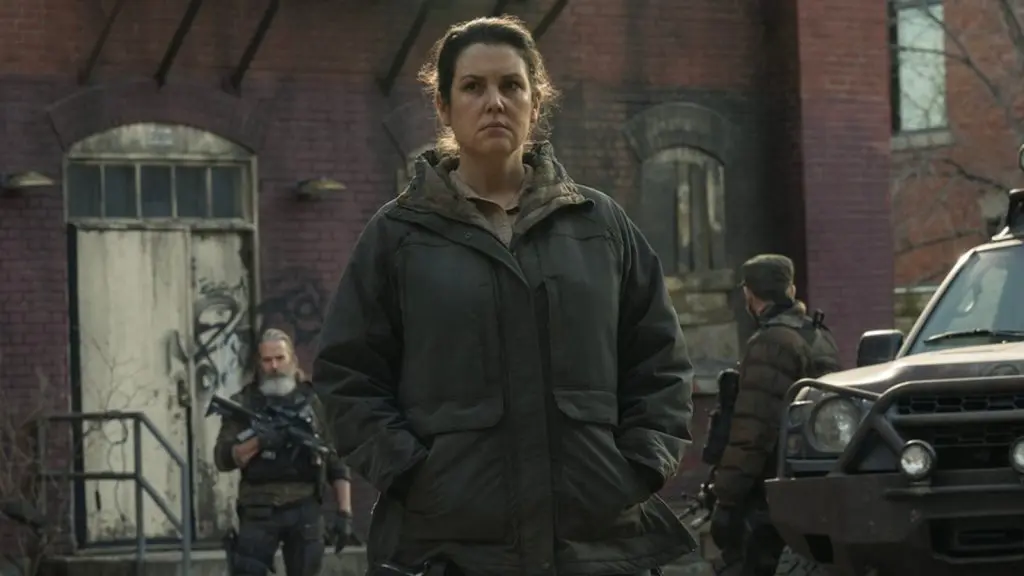
Now, here’s where my little mind got a bit ahead of the script. As Joel makes his way to the house to break in and take out the gunman, all I could think was, of course: it’s Kathleen! That’s why they showed her in her childhood home in the last scene. Henry expected this part of town to be empty, because it should have been, no one patrols here; but unbeknownst to him, Kathleen went back to her childhood home to mourn her brother. The same brother that Henry turned in! So Henry’s actions led to Kathleen being a literal physical impediment to his escape. And now the characters can face-off in this emotional moment! I get it!
But actually, as Joel reaches the gunman, it turns out it’s just some old guy named Anthony. Joel shoots him and takes the sniper. It’s too bad that Kathleen wasn’t watching them from a distance secretly just like Henry watched Joel in the beginning. It’s too bad Henry’s morally grey actions weren’t the thing that stops him from escaping. What even are themes, ya know?
Anyway, Anthony called in the trespassers on his radio before he died, so now a big ol’ group of Kansas City baddies rolls up. This fight sequence is pretty sick – I do like to see it on my screen. Joel shoots the driver of a big boy truck and it crashes into a house, sending everything up in flames for some reason. It seems like Kathleen is about to get Henry, when oh no! The ground caves in and a WHOLE buncha cruncha zomboronis burst from the ground!!
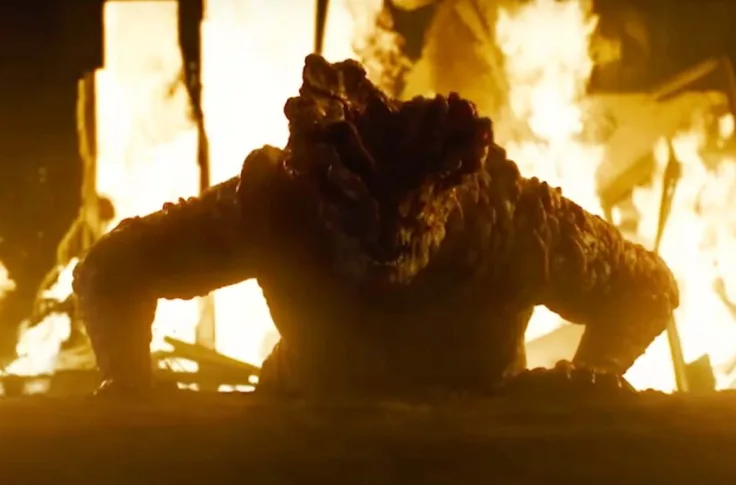
Now THIS looked really cool. The creators of the show say they can’t do lots of zombies because it’s too much like gameplay, and I call bullshit, this was the best part of the episode by far. AND that holds true both cinematically and narratively.
So the really strong character moment here was with Joel and Ellie. Joel is basically in a crow’s nest, sniping, while Ellie is navigating the zombies with her knife. Immediately Joel and Ellie begin to work together, almost like a psychic connection, to take out specific zombies so Ellie can get to safety. They also work together to help save Henry and Sam. The shot of them looking at each other and instantly understanding how they can work together is lovely. This is a great example of show don’t tell – this action sequence (that’s so much like “gameplay”) told me more about the bonding of their characters than literally any other scene in this show so far.
The annoying part of this sequence is all the times the creators’ pressed the Serendipity Button. In any narrative, shit happens around characters, sometimes out of their control. Usually it’s okay for happenstance to get your characters into trouble. For example, the truck that Joel shoots happens to crash in such a way that it happens to open a sinkhole that releases the zombies. That’s a good dose of serendipity, but it made the situation more challenging, so it’s not *as* lazy.
It’s extremely lazy to press that Serendipity Button to get your characters out of trouble, and boy were Druckman and Mazin just button-smashing in this sequence. Specifically though, the egregious example is Kathleen’s death. So here’s this villain, who we’ve known for like an hour and a half, who we know has this serious beef with Henry and Sam, who is currently trying to murder a child, and when she finally confronts Henry and has him at gunpoint, who kills her? Is it Henry, committing his first actual murder? Is it Sam or Ellie, tarnishing their youthful innocence with violence? Is it Joel, recognizing Henry as someone he needs to protect? Is it literally anything that has any thematic significance??
No, it’s a clicker. Kathleen gets killed by a clicker.
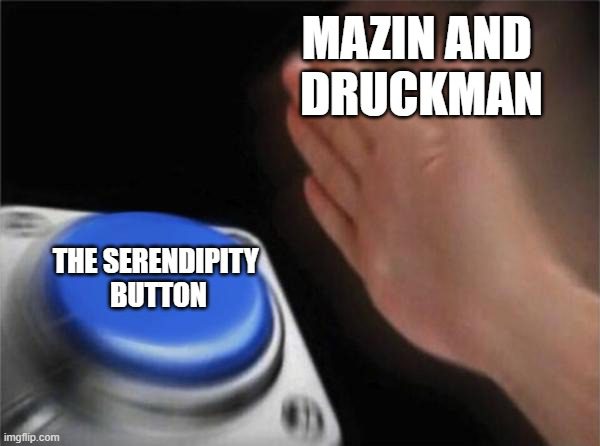
I saw some Hot Takes™ on the interwebs that it was significant because she was killed by a *child* clicker, but that doesn’t make any sense because it’s a zombie, not a child. And also what significance is there to that besides surface-level parallels again? There was also indication from the creative team that Kathleen dies from the zombies underground that she ignored because she was so set on revenge. That also doesn’t make sense in a practical manner – she just came into power and was told about the zombie problem literally a day, maybe a few days, before this scene. It’s not like she’s been shirking her responsibilities for years, or that she even caused the zombie problem in the sewers. And given the sheer number of zombos, I don’t think the existing resistance fighters could have done anything about then beforehand even if they tried! So ultimately her death is wildly unsatisfying, which I guess does match her overall character arch.
The problem with the serendipity button is that it’s lazy writing. Shit happening around your characters is not as coherent or significant as things happening because your characters made choices and took actions. In an ideal narrative, you aren’t relying on happenstance or chance to get your characters into or out of trouble. For an excellent example of such writing, go watch Black Sails.
Oh and a bloater kills Perry. Significant?
Anyway, ours mains escape and everything is hunky-dory until Sam reveals to Ellie that he’s bit. Ellie tries to cure him with her blood. It doesn’t work, and he turns. Adding that Ellie’s blood isn’t literal magic is interesting – this should affect her own belief that she can be the cure, and certainly makes the viewer doubt it. We’ll see how this is handled in future episodes.
The final scene is almost shot-for-shot a game scene. Sam attacks Ellie, and Henry shoots Sam. Henry then shoots himself. YIKES.
Joel and Ellie bury the bodies and continue on their journey. The screen cuts to black, and I still wonder why the last episode was only 45 minutes.
Analysis: TV Tropes and You!
Alright my friends, welcome to one of my favorite types of media analysis: how we portray minorities on screen, and how it affects the audience.
Now, media is a powerful tool. Indeed, while we gaze at media, media gazes right back at us – it often both reflects and challenges our understanding of the world. And so analyzing how we portray people who are at all disempowered or disenfranchised is vital critique because it affects real social relationships. Indeed, this is the premise of my podcast Gaze, where we analyze specifically LGBTQ+ media.
You may also be familiar with the idea of story tropes, which are archived well on TV Tropes. Tropes aren’t necessary bad or good – they’re just patterns in storytelling that are recognizable, and can tell us different things about our story, our writer, and our audience.
My personal expertise in tropes is for gay media, but a lot of those tropes are similarly applicable to other minority characters, including Black characters like we see in The Last of Us. Two important and contradictory gay story tropes are Bury Your Gays and Gay Too Special.
Bury Your Gays, on the one hand, is the pattern of killing off gay characters. Constantly killing LGBTQ+ characters in media is dehumanizing, as it objectifies the gay body for drama and also removes the gay from the story. This is especially egregious if the gay body is shown traumatized on screen (looking at you, House of the Dragon Episode 5).
Gay Too Special, on the other hand, is the pattern of insulating your gay characters from harm because they’re too unique and special to hurt. This is also dehumanizing, because gay people – like non-gay people – experience all different things in their lives, including pain, suffering, and even death. Protecting your gay character in a soft bubble also makes them a story object.
Basically, Bury Your Gays and Gay Too Special are at the opposite ends of a common problem in media: how do I portray someone who is a minority, who is historically disempowered in real life AND historically mistreated on-screen, in a way that is respectful but also realistic? There is no simple answer to this question – but we can get closer to better representation by analyzing where there might be problems.
Like here, in The Last of Us, with Henry and Sam.
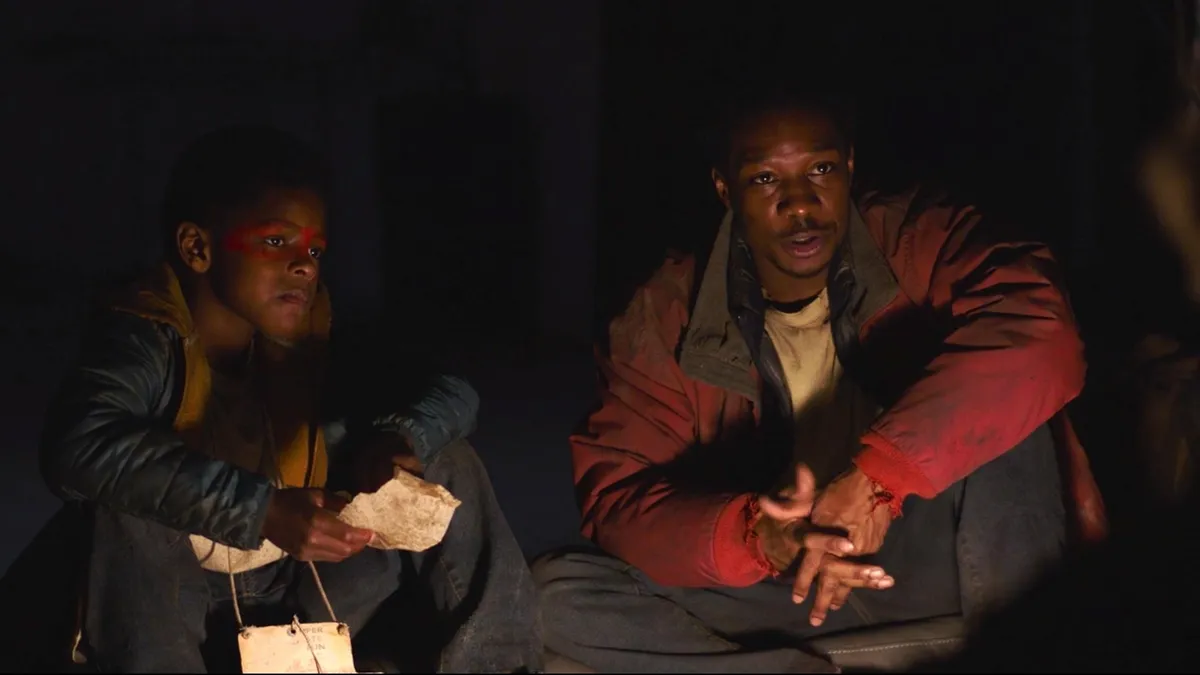
Now the Henry/Sam arc is directly from the game, so this critique is applicable to both the game and the television adaptation. Here we’re dealing with a trope similar to Bury Your Gays – this one is Black Dude Dies First. This is just the pattern of stories killing off Black characters pretty early on – and this is especially egregious in the horror genre.
Now, Henry and Sam obviously do not die first. Lots of characters die before them during their story arc. So this trope is not exactly fulfilled here. However, the end of both of their arcs is that they both die (pretty violently). We should ask: why was that the end of their story? And we should also ask, why not?
It’s not an unusual death in a zombie story for someone to get bitten; that actually should be the most common way to die in this universe. And Henry’s reaction to Sam’s turn is not wildly out of left field. There isn’t a narrative plot hole here that makes it bad – the problem is still the visual. This is still a Black child getting shot in the face because he’s attacking a white girl child (not great), and then an adult Black man shooting himself in the head (also not great). And as a modern viewer, frankly, I don’t wanna see that anymore.
At the same time, Henry and Sam were well-characterized and pleasant to have on screen, and their tragic story arc adds to the overall narrative. I wouldn’t want them to be non-Black. The solution can’t be to just make more characters white. That’s not going to solve the problem of representation in media. So then, what do we do? Do we just shrug our shoulders and accept that some things are gonna be a little uncomfortable?
The solution, imho, is actually the opposite: make more characters minorities. If you make more characters Black, for example, then you get to have a whole gamut of character arcs that are different – and you don’t end up in a bad spot where three out of four of your Black characters die horrible deaths.
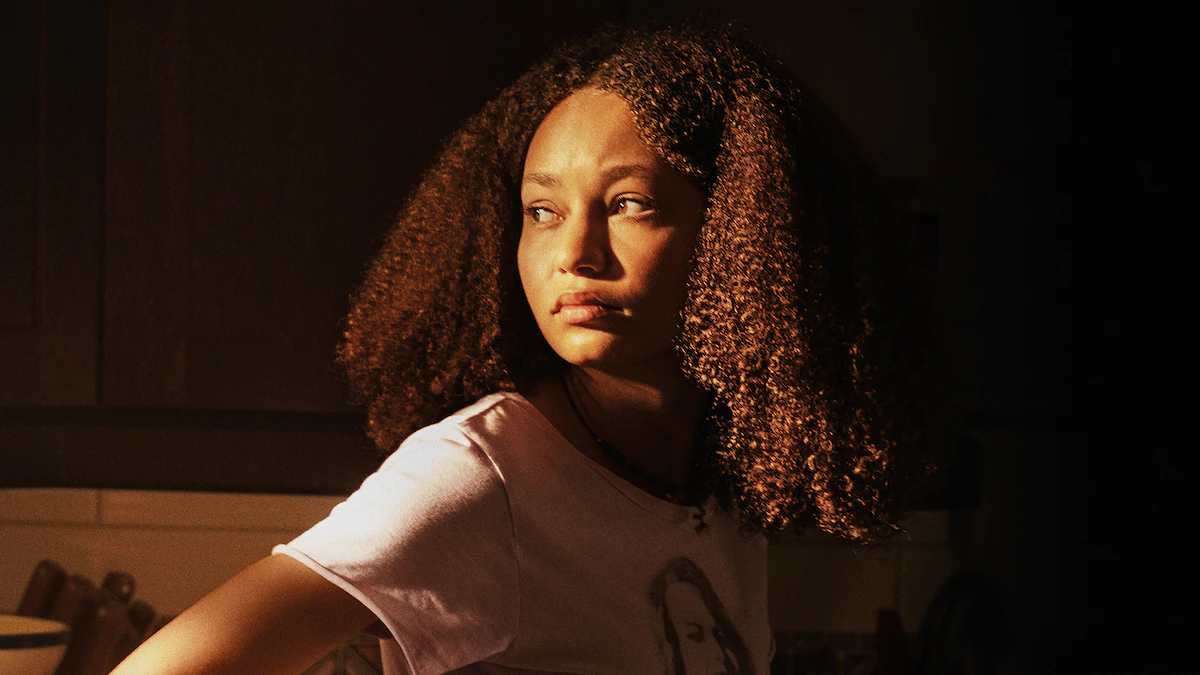
The same thing applies to gay characters and other minority characters. The more diversity, the more opportunity for storytelling, the less likely you are to fall into problematic tropes. Imagine, for example, if Bill and/or Frank of episode three had been a person of color. The white male side characters get to grow old together, but the Black male side characters die horribly? Not a great look.
We also should be questioning some fundamental assumptions about our stories, especially about adaptations. This is fiction. We can do whatever we want. The creators at The Last of Us made Sarah Black – why not Ellie? Race is not a central part of this story, indeed it isn’t part of this story at all. The game defaulted to the generic white male hero and generic poor white child who needs to be saved (one of my major criticisms of the series), why did you do that for your show?
At this point in 2023, it’s no longer acceptable to surround your white characters with various minorities and call it diversity. We need to challenge the underlying assumption that main characters are white.
Pedro Pascal is himself Chilean, and it’s unclear what he identifies as in terms of race. The show is also unclear if it’s trying to make Joel anything but Texan. So there might be some representation happening there, which would be great, but it’s unclear to me as a viewer. I would leave that analysis to Hispanic and Latinx viewers, who would know better than me!
I think my underlying problem with The Last of Us – both the show and the game – is that it’s always desperately trying to be outside the box, yet it somehow always manages to fall short. It’s certainly outside the very specific box of horror video games. As I’ve previously complained, if I wanna play a horror game as a zombie-killing lesbian, the only option I have is TLOU2. And its attempts to include different races, genders, sexual orientations, and religions is unique for this genre of game. But within the broader context of media – which it’s now in because of the TV show – it’s average-level progressive.
I mean we’re five episodes in and we have multiple examples of this limited view. You like gay people? Look at these happy gay men! Isn’t this lovely! But don’t worry, you’ll never see them again or have to deal with them beyond this filler. How about some Black people? I’ve got four for you – one supposedly survives off-screen after giving our main characters their Plot, and the other three are shot to death. Isn’t that sad? Look at how sad our mains are! But don’t you worry, these sacrifices are all for the greater good of transporting this very special white child.
It just all feels very much like decorative inclusivity. And that worries me.
“Mid” by Any Other Name Still Smells as Mild
The last thing I’ll say about The Last of Us is that, given the trajectory, I think this is going to be a solid B+ kinda show. The kids these days say things are “mid” – I’m seeing a mid+ show unfolding on the television. I’m reserving until after episode 6 to make that conclusion, but that seems to be where it’s going. And that’s okay! Not every show can be a masterpiece. And when you start from a fundamentally flawed premise, yeah, it’s hard to adapt it better to screen.
This episode especially felt very mid+, and I think I’ll give it a solid 7 on my subjective and arbitrary scale. This sounded very first-draft in places, and the structure of the ending was definitely first-draft energy. Like, somebody wrote ZOMBIES POP OUT THE GROUND and the whole writers room went LET’S GOOO and that was it. There were a few poking attempts at something thematic, but none of it was complete or coherent. And it’s unfortunate because there could have been more narrative connections!
Also, frankly, they could have changed Henry and Sam’s ending. I know it’s from the game. Who cares? They could’ve had Henry sacrifice himself to save Sam, and Sam gets bit anyway, if they really had to kill them. Or they could’ve just gone their separate ways. I never found the Henry/Same deaths to be anything other than convenient in the game. Maybe they’ll follow-up on it in the next episode in a way that is meaningful – but thus far, the writers haven’t done that with anyone. So I’m not holding my breath.
In conclusion, this was definitely an episode of television, and I watched it and would watch it again. 7 out of 10.
Check out my TikTok @beelock after the show airs for reactions to the episode!
Images of The Last of Us Courtesy of HBO
Have strong thoughts about this piece you need to share? Or maybe there’s something else on your mind you’re wanting to talk about with fellow Fandomentals? Head on over to our Community server to join in the conversation!

